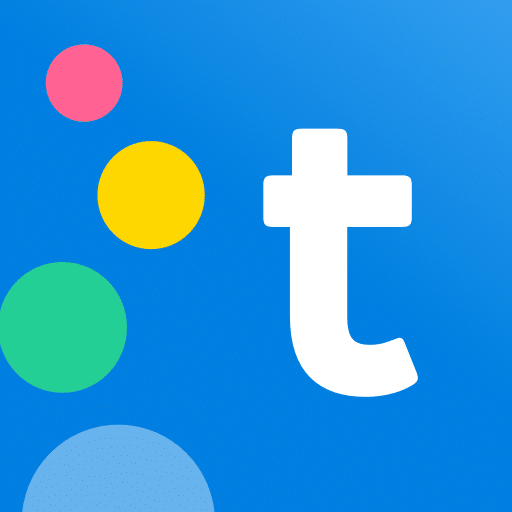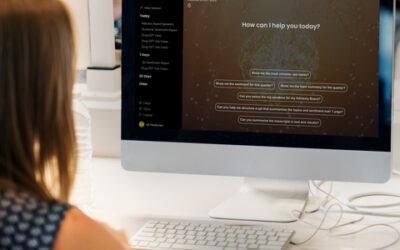The pandemic has made it clear that employee well-being and engagement are crucial for a healthy and productive workplace. Our partners at Trickle have been at the forefront of exploring this topic, and we’re excited to share their insights with you. In this interview, we’ll delve into five key questions on how companies can address post-pandemic changes, including how to avoid burnout, achieve work-life balance, stay connected while remote working, and how to delight your employees. We’ll cover the challenges organisations face in the remote work era and offer actionable solutions for promoting a healthier workplace culture. Read on to learn more from Trickle’s CEO, Paul Reid.
Firstly, we love Trickle as a platform, as the CEO, why were you so passionate about creating an employee-experience platform?
Well I didn’t know it as “employee experience” at the time, but in my first job as a software developer back in 1995, I was working in a small but fast growing start-up in Edinburgh, and it was here that I stumbled across the importance of truly understanding what matters to your employees in the moment.
Our team was working from the large and beautiful home of the husband and wife founders, which was fine when there was only a handful of us – working at various desks in different rooms, gathering around the kitchen table for freshly made bread and soup at lunchtime.
But over time, and especially as we added more people to the team, the challenges of working this way started to dominate our lunchtime conversations… using domestic furniture as opposed to ergonomic office desks and chairs, lack of communication around the plans for the business and the next steps beyond this “home office”, no structure or process for on-boarding new members of staff etc. It was all building up.
I began to notice that lunchtime walks, and garden coffee breaks were being dominated by chat around issues as opposed to highlights and opportunities, and this started to grind everyone down – no one more than me.
I had been approached about moving to another job, and I was keen to explore further. And it was then that I thought: this is crazy – we’re talking about all these issues all the time, but we’re not engaging with the founders on the issues. We were moaning amongst ourselves, as opposed to seeking constructive conversations that could help us feel better and progress.
So with a fresh job offer in my back pocket, I felt I had nothing to lose, and decided to take the lead on gathering a list of the key issues, which I prioritised based on discussions with my teammates, and wrote down in “Company Issues.doc” which I saved on to a floppy disk (the 90s, remember?!) and left on the managing director’s desk one afternoon when she was out.
The people raising the individual issues were anonymous, but I put a post-IT note on the disk to say it was from me – I guess it was easier to be bold with my opportunity to move on.
What happened next surprised me, and had a massive impact on my career. I received a call from the MD the next day, inviting me out to lunch with the founders and another director to discuss the document. I was nervous but intrigued, and the conversation we had ended up being incredibly positive and transformational for that business.
The management team thanked me for making them aware of the various challenges and issues, and asked if I would help them to engage with the team, and work towards improvements in each of the areas – which I was delighted to do.
It turned out I didn’t take that other job, and ended up working to tackle the list of improvement opportunities – and more importantly – make focussed discussion around our working environment and the things that were important to us a weekly activity.
Two years later I was still there, working at a progressive business that had learnt the true value of engaging with employees on their everyday experience in the workplace.
In terms of my overall career, this early experience taught me of the value of focussing on employee experience, and looking to optimise it as part of day to day business. I embedded this “employees first” approach within my own start-up which I launched in 2000, and when I looked back on the journey 15 years later after we had become the UK market leader in our field, and had been acquired by a FTSE50 organisation, it was clear that our people-first culture was the key to our success.
In the tech industry, we’re often moving at such a rapid pace. How do we avoid burnout and work towards a more holistic work life balance?
My approach to building businesses has always been to put our people first. Ahead of our customers.
Don’t get me wrong, our customers are our lifeblood. We love partnering with them, and seeing the successful outcomes they realise from working with us.
But without a healthy and energised workforce, we won’t have happy customers. It just won’t happen.
So back in the early 2000s, for me this meant allowing people to work within patterns that fitted their home circumstances… perhaps taking longer periods away from the office to travel home to see family – whilst working remotely.
In the modern world, I think it’s really about demonstrating to your people that whilst we all have strategies to implement, company objectives to deliver, and deadlines to meet – we can’t do any of these things without having conversations about (A) how we all feel, and (B) what’s needed to keep us happy, healthy and energised in the workplace.
I believe that ultimately, we all need to focus every day on building and refining a working environment that’s optimised for both (i) us as employees, and (ii) those we deliver our products and services too (a.k.a. our lovely customers!).
In a post-pandemic world – what do you see as future challenges for both employees and employers?
The workplace has changed more in the last 2-3 years than it did in the previous 70, but some of the processes and ways of working remain the same. We know all about Zoom and Teams meetings, and remote/hybrid working has become the norm, but I can’t help feeling that our default working patterns – the ways we interact, engage and work with each other every day – haven’t really changed in response to our new circumstances.
Post-pandemic, there has been a lot of talk about the pace of change, and I feel it’s really important that we now view change as a constant.
Change is now something that needs to happen week by week, month by month, to make sure we as employees, and the organisations we work within, are adapting to current needs from our customers and stakeholders, and staying ahead of the game – leading the way over our competitors.
The agile approach to software development transformed the industry over the last 15+ years, and I feel that embedding agility within our organisations is crucial to be successful in the modern workplace.
When I say agility, I mean continually sensing that some things aren’t working as well as they could, deep-diving the reasons and surfacing improvement opportunities, and then getting on with making the little tweaks we know would make things better for both us as employees, and the organisations we work within.
I see a real need for making this agile, inclusive and transparent approach part of our everyday business – something that just happens.
Fundamental to making this work, is inclusive two-way engagement across the organisation – employee-led from the ground up, to compliment the top-down leadership-led approach that organisations have traditionally been built around.
With more and more people working from home in the post-pandemic world, what would you suggest are the best ways for teams to stay connected?
There are loads of communication tools out there, and most of us use these day by day to easily connect with our teammates.
However, what we communicate on needs some focus in my view.
In the old working world, ideas and issues would be discussed in the corridors between meetings, or the canteens and lunch walks to the local roll shop. There was natural space and time between meetings to discuss challenges and potential solutions.
Innovation could live and breathe organically.
In the new working world, things have become far more scheduled. Remote meeting after remote meeting… some days with no time in between.
In this world, where is the space for these natural conversations that can inspire change and spread innovation team-by-team across the organisation?
My experience is that it’s now crucial to schedule dedicated time to review challenges and uncover improvement opportunities across your teams – otherwise they’re less likely to just happen; or they’ll happen in silos and improvements become fragmented and constrained.
Some types of conversations need time to live and breathe – especially those around challenges and opportunities to improve. And these conversations are typically not well-suited to the communication tools we use for everyday collaboration with our teammates.
How do companies get ahead in delighting employees from onboarding to ultimately retaining them for as long as possible?
I feel strongly that there are two key attributes to helping people to feel that they’re working at the right organisation – and the good news is that they are simple to do: (i) listening, and then (ii) helping your people to see that their views are important – that their opinions have an impact on the business. My experience is that these behaviours induce a sense of belonging in people – which leads to greater loyalty – and typically results in positive, progressive behaviours becoming a core part of the organisational culture.
By Paul Reid, CEO & Founder, Trickle

Trickle is a workplace engagement, recognition and wellbeing platform that drives positive change by giving your employees a voice. Trickle helps you build a better workplace and do better business. Lots of organisations know that employee engagement and wellbeing is important. But some find it hard to pin down what these terms even mean – let alone address the factors that drive them. Trickle gives you the platform to transform your company’s culture, improve communication and increase productivity that drives business performance. Find out more about Trickle on their website.




